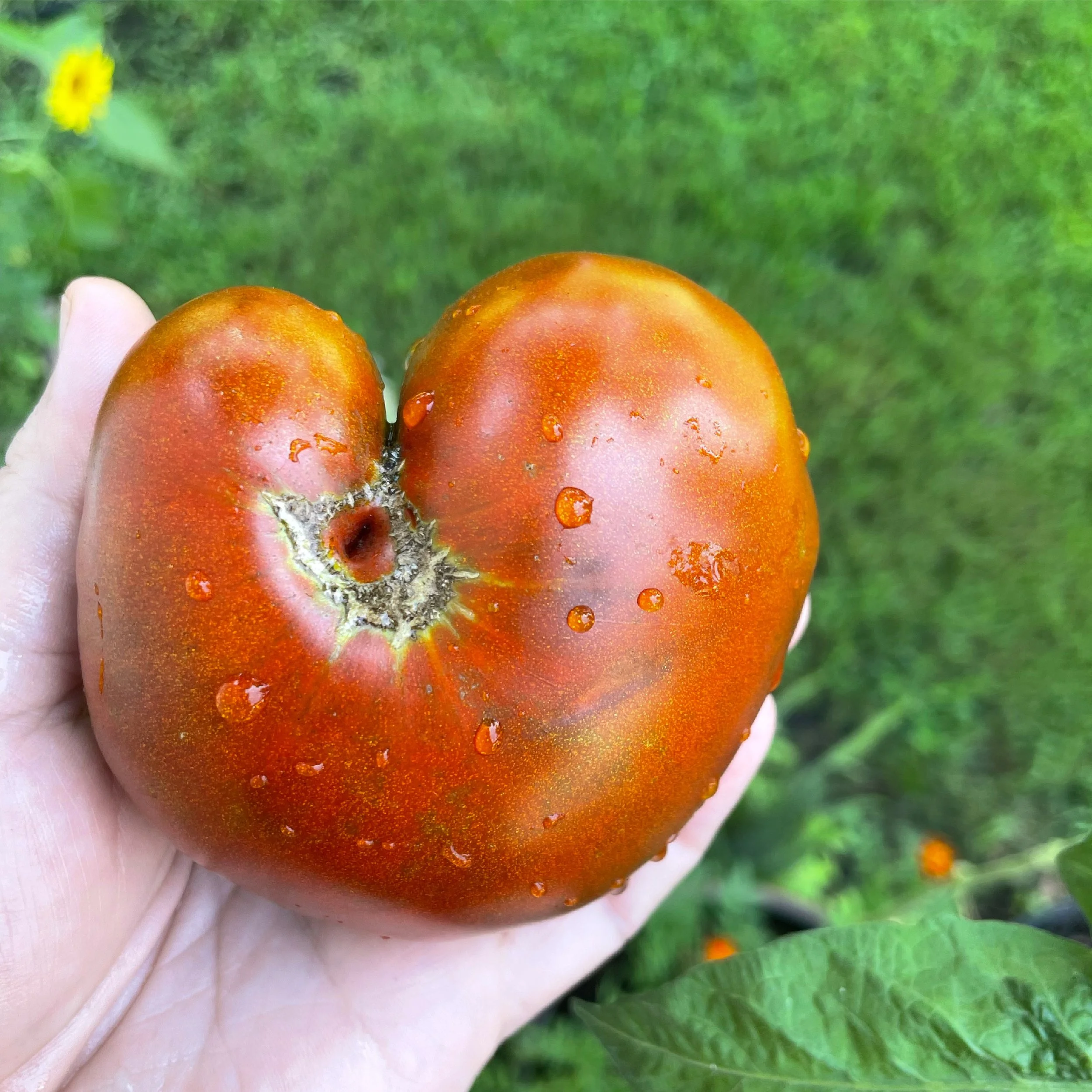Fall Tomato Tips
Links on this page may contain Affiliate Links.
Tomatoes are probably one of the more difficult crops to time out for the fall garden (why we added a timing example for you, below), and probably the highest maintenance. They are still pretty easy to grow as long as you know what to do.
Keeping Indeterminates
First, if you are growing indeterminate tomato plants during the spring, you do not have to start new tomato plants for fall. Indeterminate tomatoes will grow until something kills them, usually frost. If your spring plants are still healthy, and you want to keep them in your garden until frost, then do that. You can trim back any unhealthy foliage, and the plant will put out new foliage. You can even trim the whole plant down to a few feet, and watch it grow. You will be amazed at how quickly it will grow back. If it is too hot out for your tomato blooms to set fruit, then you do not need to fertilize your plants, but when it cools down, give them a fertilizer with a high phosphorus content.
Starting from Seed
Try to select seeds for quickly maturing varieties, like cherry tomatoes or shorter maturity hybrid tomatoes, in order to increase the number of days you will be able to harvest.
If you choose to start your plants from seeds, keep in mind that during the timeframe when those plants need to be started during the summer, it may be too hot outside. Starting in the shade outside will provide a cooler area for seed starting; however, less light may result in leggier or stressed seedlings. So, you may need to start seeds indoors, in lighting and temperatures more appropriate for the seedlings.
Here is a timing example using cherry tomatoes. Most cherry tomato varieties take 65 days to mature, but take 6-8 weeks to grow to a transplantable size. Plus, you will want to harden them off before you transplant them. Once they have matured, the more days you have in your harvest window (between maturity and first frost), the more tomatoes you will get. And that is the end goal - the tomatoes.
So, if your first frost is 11/5, and you want one month of tomato harvests before first frost, then you will need to transplant your tomatoes (with 65 days to maturity) into the garden around 8/1, and start the seeds around 6/15. If you want a longer harvest window, you can start those seeds earlier.
Purchasing Transplants
If you are reading this post, and it is too late to start seeds for fall harvest - or you just are not into the idea of starting seeds indoors - you may be able to find some plant starts locally. More stores seem to be carrying fall plant starts these past few years. Look for containers that contain several plants per cell, not just one. This way you will get more plants for the same price.
Hardening Off
Whether you start seeds indoors, outdoors, or purchase transplants - harden them off before you transplant them into the garden. Hardening off is the process of acclimating seedlings to outdoor conditions slowly. If you do not harden off the plants, they may suffer shock, burn in the sun, or die. Wind and sun are the primary concerns. There are as many varying opinions on how to harden off plants as there are gardeners. Over time, as you try different things, you will develop your own method. The important thing is to start in a mostly shady area, and gradually expose the seedlings to sun and wind over some days.
Fertilizing
We use Dr. Earth’s Flower Girl (a bloom booster) at transplant, and monthly until the plants start setting fruit. This is our favorite fertilizer for both tomatoes and peppers.
Harvesting
You do not have to wait until tomatoes turn red to harvest. Harvest at the “breaker stage” when the tomatoes start to blush. They will ripen on the counter or window sill. Once frost hits you may still have several green tomatoes on your plants. These are great for fried green tomatoes or green tomato chutney!





